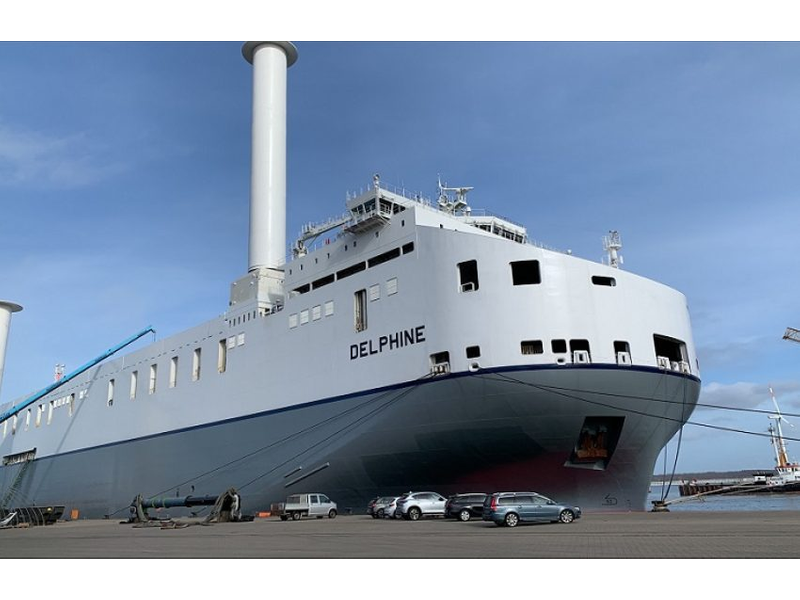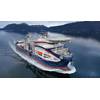CLdN Car Carrier Fitted with Rotor Sails
CLdN announced one of its RoRo car carrier vessels is ready for its return to service after being fitted with a rotor sail wind propulsion system.
The Luxembourg based company is the latest in a string of ship owners and operators to have turned to wind propulsion systems as a means to reduce fuel burn and emissions amid its journey to improve operational efficiency and its environmental footprint.

Now fitted with two 35mx5m rotor sails, Delphine is the first vessel in the CLdN fleet to be fitted with the system and will return to service from Zeebrugge, Belgium, as from February 27, the company said. The ship has a cargo capacity of more than 8,000 lane meters and transits between the UK, Ireland and mainland Europe.
The rotor sails, which can be installed on new vessels or retrofitted on existing ships, incorporate a modernized version of the Flettner rotor, a spinning cylinder that uses the Magnus effect to harness wind power to add forward thrust to a ship. The solution is fully automated and detects whenever the wind is strong enough to deliver fuel and emission savings, at which point the sails start automatically. The sails are also tiltable, allowing the vessel to pass under bridges and maintaining operational flexibility.
CLdN describes Delphine as the largest and one of the world's most fuel-efficient short sea roll-on / roll-off (ro-ro) vessels, with 28 grams of CO2 emitted per tonne of cargo shipped per km travelled. With its new rotor sails deployed, the ship will emit even less greenhouse gas going forward thanks to an emission reduction saving of up to 10%, the company said, noting it will work with the Maritime Technology Division at Ghent University to study the sails' performance over the coming months.
Gary Walker, chief operating officer, CLdN RoRo, said, “CLdN is the top performer amongst its ro-ro shipping peers in Northwest Europe, producing the lowest CO2 emissions per tonne of freight carried with its fleet of modern ships. By investing in technologically advanced ships and terminals, CLdN enables its customers to improve their carbon footprint and support them in making their supply chains more efficient and robust. The rotor sails will maximise our fuel and emissions savings on the MV Delphine and we will use this project to help determine how the technology could be deployed on the current CLdN fleet and our new-build vessels. Delphine’s redeployment to the fleet will help meet the current high levels of customer demand.”
Related News

